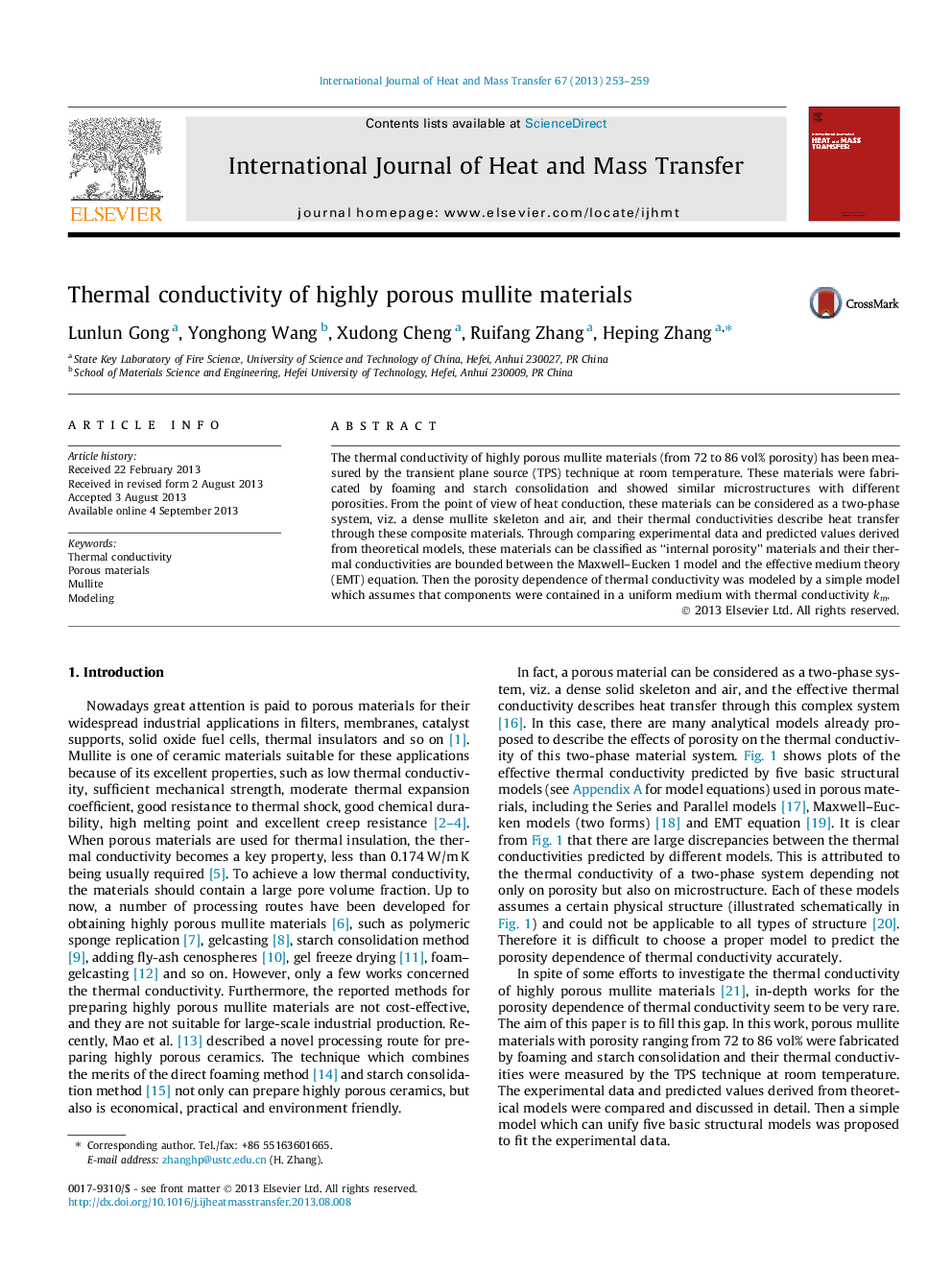| Article ID | Journal | Published Year | Pages | File Type |
|---|---|---|---|---|
| 657939 | International Journal of Heat and Mass Transfer | 2013 | 7 Pages |
Abstract
The thermal conductivity of highly porous mullite materials (from 72 to 86Â vol% porosity) has been measured by the transient plane source (TPS) technique at room temperature. These materials were fabricated by foaming and starch consolidation and showed similar microstructures with different porosities. From the point of view of heat conduction, these materials can be considered as a two-phase system, viz. a dense mullite skeleton and air, and their thermal conductivities describe heat transfer through these composite materials. Through comparing experimental data and predicted values derived from theoretical models, these materials can be classified as “internal porosity” materials and their thermal conductivities are bounded between the Maxwell-Eucken 1 model and the effective medium theory (EMT) equation. Then the porosity dependence of thermal conductivity was modeled by a simple model which assumes that components were contained in a uniform medium with thermal conductivity km.
Related Topics
Physical Sciences and Engineering
Chemical Engineering
Fluid Flow and Transfer Processes
Authors
Lunlun Gong, Yonghong Wang, Xudong Cheng, Ruifang Zhang, Heping Zhang,
